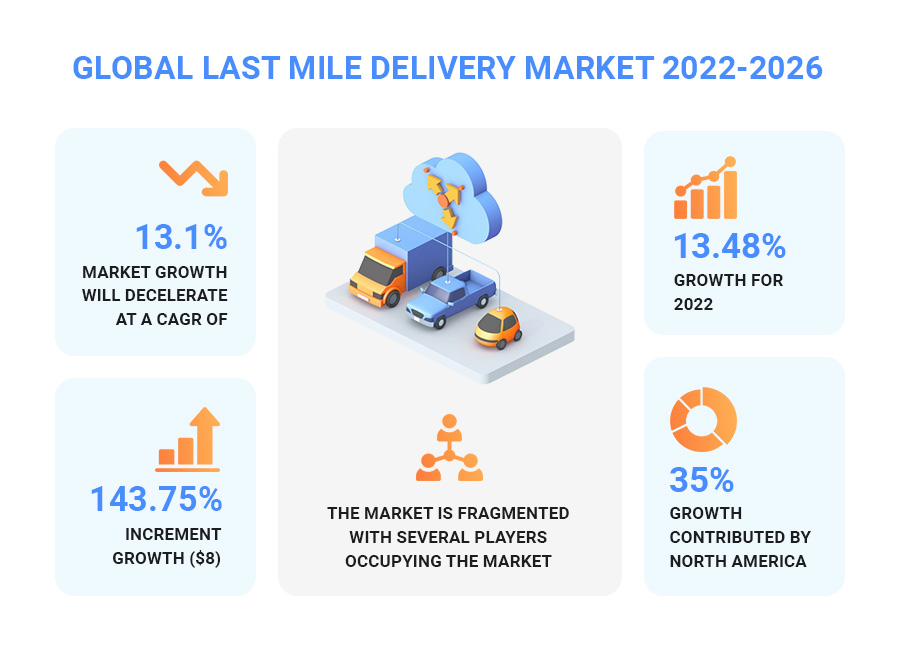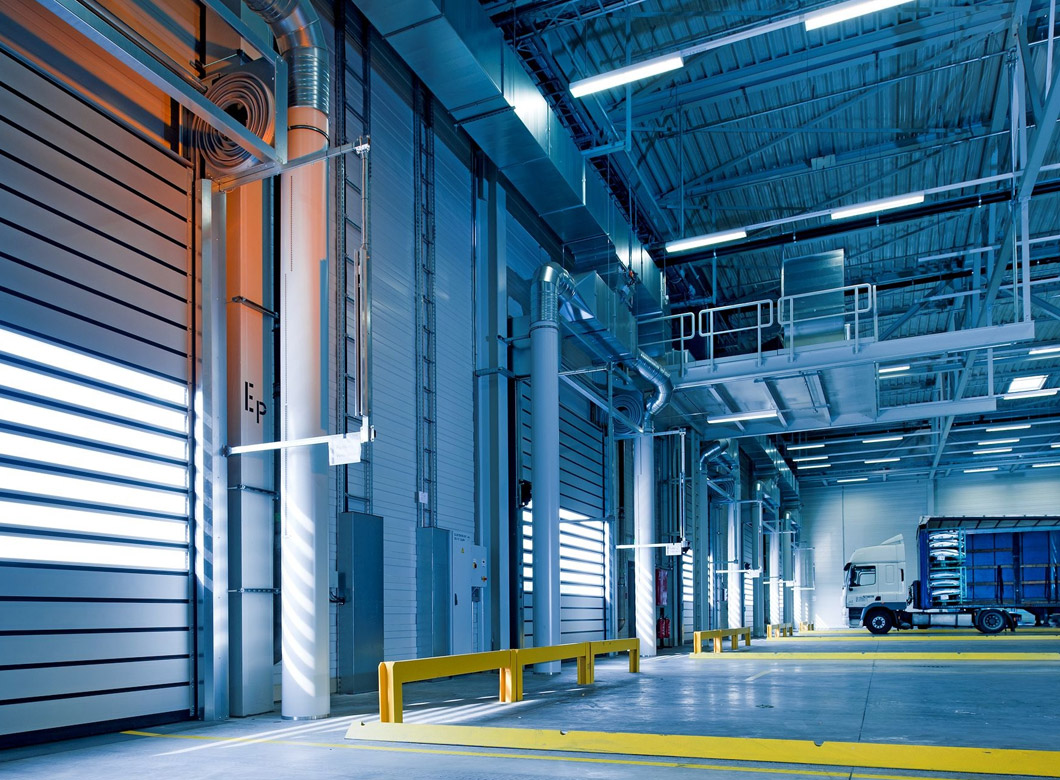Last-mile delivery refers to the final leg of a supply chain's activities. The journey of a product from a warehouse to the final consumer's doorstep is also the most crucial phase in the delivery process, and it should be well-managed for timely distribution. Because the last mile delivery is the most expensive part of the journey from the transportation hub to the final destination, resource efficiency should be a top focus. As client demand develops, businesses are preparing this critical step for quick and efficient shipping. Whether it's a private house or a retail shop, the final destination of the supply chain should be reached at breakneck speed for a thriving firm and to continue churning out more and more delighted consumers.
In layman's terms, last-mile delivery involves six major phases:
- The orders are recorded digitally in our system.
- Then the order is delivered to the transportation hub.
- The order is then handed over to our delivery staff along with all the necessary information like recommended route, handling instructions, and the locations of the recipients.
- Followed by scanning the orders for record-keeping purposes and placing them onto vehicles.
- After then, the item is delivered to the specified recipient.
- The last step involves recording and updating the delivery status.
In today's multichannel market, providing clients with what they want, when they want it, and delivered to where they want it are critical needs for keeping a business viable while maintaining a high level of client satisfaction. And, if logistics are not adequately handled, they create an unsustainable load on the company's supply networks to fulfil the task. AWL being one of the leading 3PL/4PL Logistics Solutions Provider, we fully investigate ways to optimize operations by refining Last-Mile Delivery and its present supply chain inefficiencies. We work with major companies to improve delivery methodologies and differentiate company operations in order to provide better, predictive, and cost-effective deliveries to their end customers today and in the future. In order to decrease the security risks and hassles connected with Last-Mile delivery, we seek the assistance of automation and software in our supply chain processes.
The rapidly expanding business ecosystem has become an expensive annoyance for many countries both during and after the pandemic. Last-mile delivery enters the value proposition because it requires delivering a wide range of things and services to a big number of receivers (customers), all of whom have high service requirements and strict time constraints. According to a well-known business journal, two obstacles make Last-Mile delivery impossible. The first is cost, as customers want not just speedy but also free delivery. The next point is delivery efficiency, which occurs when multiple stops are made yet delivery quantities are low. Free delivery, real-time tracking, route optimization, and CRM development account for more than half of transportation expenditures. In this age of digitalization and automation, the market is not only highly competitive but also fraught with logistical issues. AWL US has implemented Last-Mile Delivery methods such as total automation and delivery efficiency.
According to research, 45% of consumers want delivery in two or fewer hours. And around 80% of eCommerce buyers expect real-time delivery tracking. Customers' high expectations for their delivery experiences have transformed the way organizations approach delivery and fulfillment procedures. Customers' demands are prompting businesses of all kinds to rethink how they handle the last mile, including logistics services, retailers, supermarkets, restaurants, and others.
Why Last-mile Logistics is Challenging?
Last-mile delivery services should focus on accuracy, timely delivery, and speed to improve brand loyalty and consumer delight. According to one survey, more than half of consumers will not buy from a firm again if they are displeased with the shipping service. According to supply chain consulting companies, the last mile is one of the most expensive and time-consuming aspects of warehouse and supply chain management. As a result, it confronts several obstacles. Let's talk about the obstacles of last-mile delivery and how to overcome them.
1.Costly Delivery
Many logistics and supply chain companies provide pricey last-mile delivery for both individual clients and enterprises. The key reason for the high cost is the establishment of an infrastructure that allows for on-time delivery. Furthermore, shipping and logistics businesses suffer the expense of late deliveries, difficult routes, driver compensation, extra pauses, and fleet upkeep. If the delivery is postponed after failing once, the costs are doubled. Furthermore, the increase in delivery costs is exactly proportionate to the situation in which shopping cart abandonment rates climb. According to a recent poll, more than half of customers reject acquiring an item if there are any last-mile delivery expenses involved. The key to developing an effective and better route is strategic planning. Supply chain orchestration or strategic planning is essential for creating an effective and better route, which results in lower delivery costs.
2. Obsolete Technology
Another difficulty in the supply chain is out-of-date technology. According to SOTI, over half of the world's supply chain management organizations continue to rely on obsolete technology that is no longer useful in their operations. These archaic methods for last-mile delivery are significantly reducing their operational costs, and as a result, consumers are either paying a high delivery fee or not purchasing the items at all. And, regardless of the period, clients will never want to cope with delays and exorbitant shipping rates. AWL has implemented a GPS monitoring system in our fleet that anticipates probable blockages, monitors the whole last-mile route, and develops proactive approaches for speedier and less expensive delivery.
3. Lack of Foresight
Visibility is an issue for many logistics firms. The visibility of the deliverer in its delivery operations is the most important provision for guaranteeing client loyalty to its logistics partner. Buyers want to know where their shipment is and when it will arrive by using real-time tracking of the consignment. AWL, a technologically advanced supply chain management company in India, offers real-time tracking so that consumers can view the status of their orders and trace the whole course of their cargo. They pay great attention to the last-mile delivery path. At AWL, the last-mile delivery process has been enveloped by extremely complex and technologically advanced delivery management software that not only gives real-time status but also enhanced transparency into the process. This allows our clients to follow the progress of their delivery to their front door.
The most crucial component required by any delivery operation is regularly updated data on not only the relevant inventory and actual site of delivery, but also the number of active orders from each client; related internal procedures; and available internal or external fleets to conduct deliveries. If logistics companies have data on both the delivery flow and the consumer, they will get important insights into understanding and optimizing delivery operations. As a consequence of these improvements, logistics and supply chain organizations will be able to give clients the speed, convenience, and flexibility they require.
4. Unorganized Planning of Route
Most supply chain organizations throughout the world have disorganized and insufficient route planning. Particularly if they are a fresh entrant into the market. Yes, route planning is a sophisticated procedure that is tough for amateurs due to the numerous variables to consider and the logistical process. Poor route design leads to increased expense, delivery delays, and customer dissatisfaction. We at AWL simply solve this challenge with adequate route optimization. It not only reduces the costs of late delivery, but it also increases the predicted arrival time. And in both cases, our consumers are satisfied and return to us.
5. Inefficient Management
In a supply chain management firm, low levels of efficiency are nothing short of a sin. As a result of the effort to ensure customer pleasure, last-mile delivery has grown more efficient, and logistics businesses are focused on it. Another cause for increased efficiency is fulfillment services. When logistics organizations throughout the world have inefficient systems, they see a rise in late deliveries and irate customers. And if they are dealing with a high amount of orders, the situation may deteriorate. To address this issue, AWL has implemented last-mile delivery software. The programme automates the process from warehouse to customer's door. It enables us to redirect our delivery fleet in the event that clients' plans change at the last minute.

6. Miscellaneous Challenges
Unpredictable factors are another source of difficulty in last-mile delivery. When a packed item is in transportation, a variety of unforeseeable events might occur, causing last-mile delivery to be interrupted. Situations such as bad weather, crowded traffic, or vehicle difficulties caused by a lack of sufficient maintenance are out of control. We can, however, address these difficulties by building contingency plans and keeping continual touch between our personnel and clients. At AWL, we always have a plan of action ready so that, in the case of an emergency, we can quickly deploy the necessary treatment and prevent worsening the issue and losing the customer. By utilizing effective last-mile delivery operations, logistics organizations may adapt to changing consumer expectations and differentiate their goods. Businesses that wish to flourish with an online store must confront such last-mile delivery difficulties head on. This requires total openness, the use of suitable technology, and excellent communication between your delivery team and your clients.
Conclusion
Clients all throughout the world now choose their ideal delivery experience over their satisfaction with the items they've gotten. Given this, it's no wonder that how businesses handle last-mile logistics is increasingly defining market share. Those that want to differentiate themselves must provide exceptional delivery experiences based on a tried-and-true method to managing their last-mile operations. And for this, significant players in logistics and supply chain management can work wonders in terms of ensuring customer happiness, on-time delivery, and cost savings.

Rituraj Pankaj
Tech Leader in Supply Chain Management




